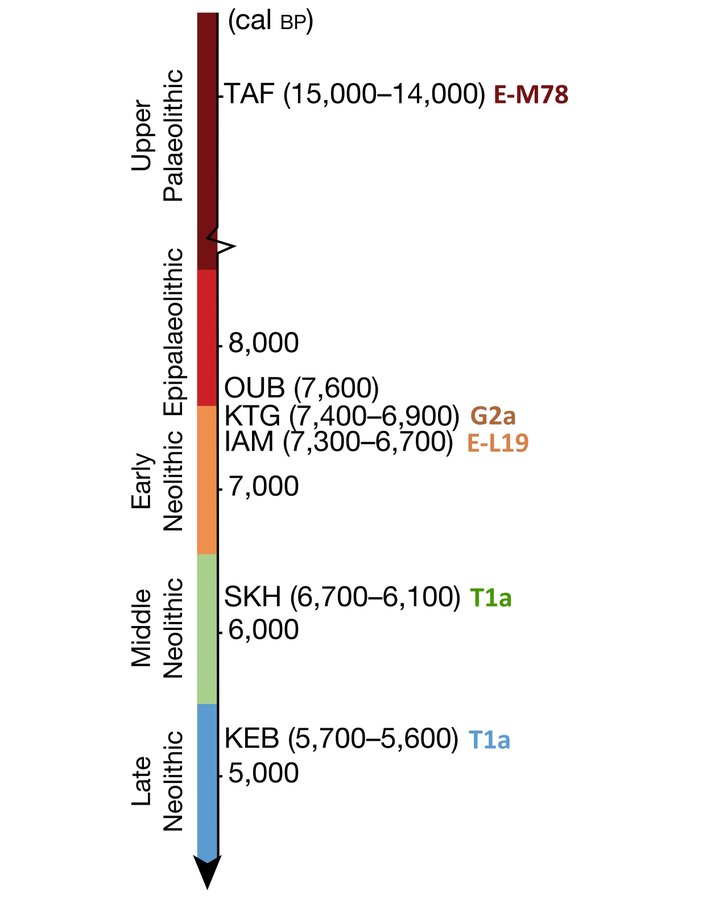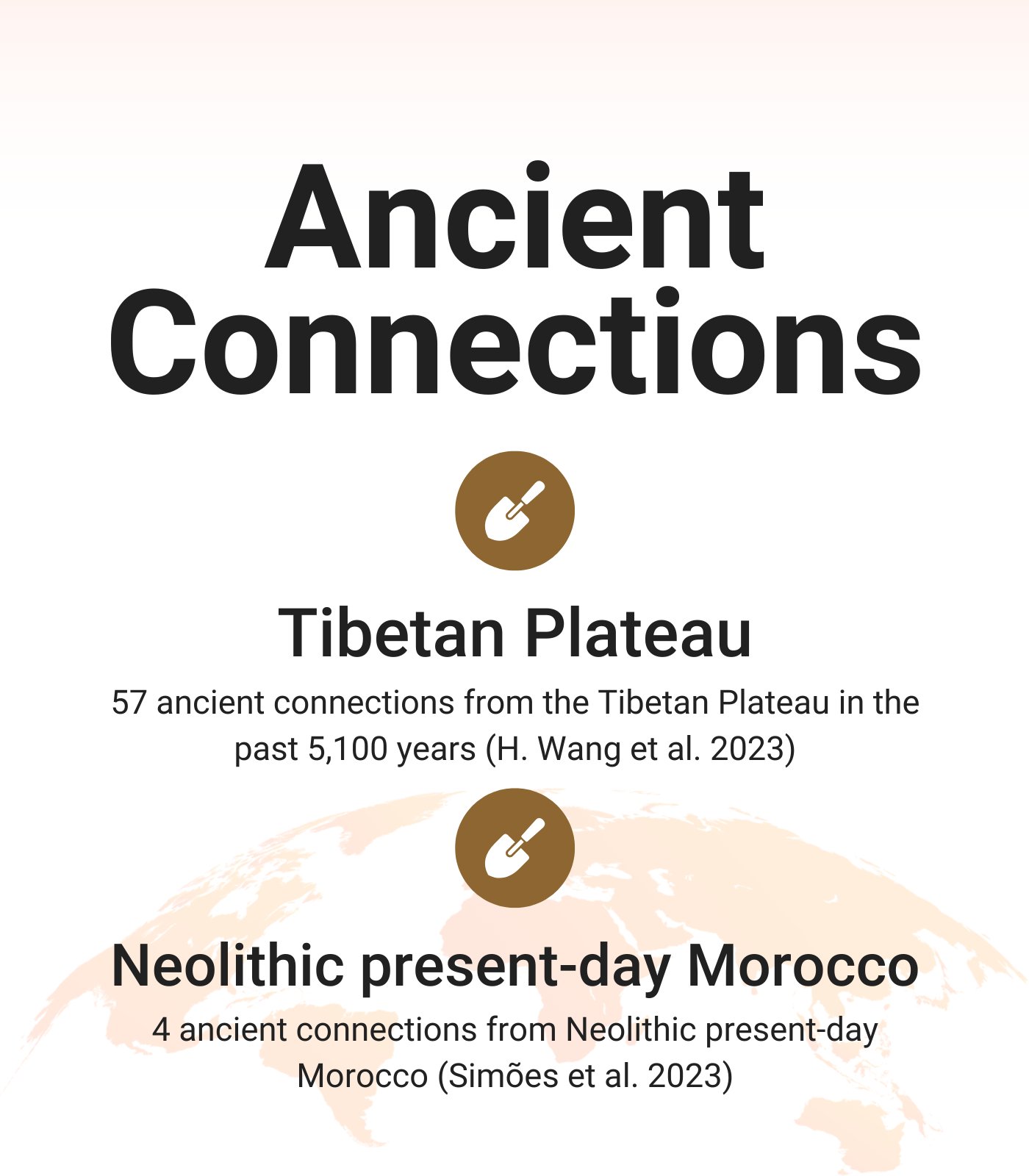bicicleur 2
Regular Member
- Messages
- 6,367
- Reaction score
- 1,402
- Points
- 113
In northwestern Africa, lifestyle transitioned from foraging to food production
around 7,400 years ago but what sparked that change remains unclear. Archaeological
data support conflicting views: (1) that migrant European Neolithic farmers brought
the new way of life to North Africa1–3 or (2) that local hunter-gatherers adopted
technological innovations4,5. The latter view is also supported by archaeogenetic
data6. Here we fill key chronological and archaeogenetic gaps for the Maghreb, from
Epipalaeolithic to Middle Neolithic, by sequencing the genomes of nine individuals
(to between 45.8- and 0.2-fold genome coverage). Notably, we trace 8,000 years of
population continuity and isolation from the Upper Palaeolithic, via the Epipaleolithic,
to some Maghrebi Neolithic farming groups. However, remains from the earliest
Neolithic contexts showed mostly European Neolithic ancestry. We suggest that
farming was introduced by European migrants and was then rapidly adopted by
local groups. During the Middle Neolithic a new ancestry from the Levant appears in
the Maghreb, coinciding with the arrival of pastoralism in the region, and all three
ancestries blend together during the Late Neolithic. Our results show ancestry shifts
in the Neolithization of northwestern Africa that probably mirrored a heterogeneous
economic and cultural landscape, in a more multifaceted process than observed in
other regions.

around 7,400 years ago but what sparked that change remains unclear. Archaeological
data support conflicting views: (1) that migrant European Neolithic farmers brought
the new way of life to North Africa1–3 or (2) that local hunter-gatherers adopted
technological innovations4,5. The latter view is also supported by archaeogenetic
data6. Here we fill key chronological and archaeogenetic gaps for the Maghreb, from
Epipalaeolithic to Middle Neolithic, by sequencing the genomes of nine individuals
(to between 45.8- and 0.2-fold genome coverage). Notably, we trace 8,000 years of
population continuity and isolation from the Upper Palaeolithic, via the Epipaleolithic,
to some Maghrebi Neolithic farming groups. However, remains from the earliest
Neolithic contexts showed mostly European Neolithic ancestry. We suggest that
farming was introduced by European migrants and was then rapidly adopted by
local groups. During the Middle Neolithic a new ancestry from the Levant appears in
the Maghreb, coinciding with the arrival of pastoralism in the region, and all three
ancestries blend together during the Late Neolithic. Our results show ancestry shifts
in the Neolithization of northwestern Africa that probably mirrored a heterogeneous
economic and cultural landscape, in a more multifaceted process than observed in
other regions.




